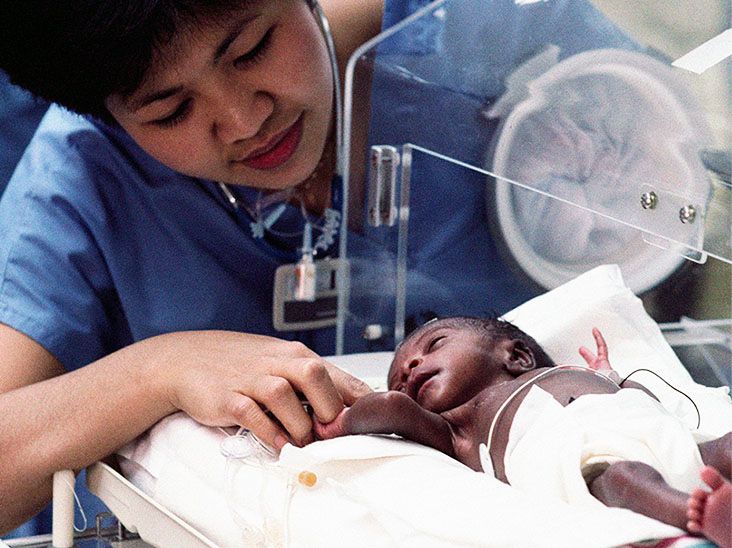How common is sickle cell anemia? In the United States roughly 100,000people live with the disease, while worldwide the number climbs to about 8million. Those figures translate to a prevalence of about 0.09% of the global population and1in3,650 births in the U.S.
Why should you care about these numbers? Knowing the exact sickle cell prevalence helps doctors spot atrisk families early, guides publichealth funding, and lets patients and their loved ones understand the real odds they face. Let's break it all down together, plain and simple.
Global Prevalence Overview
What is the worldwide sickle cell prevalence?
The most recent Global Burden of Disease (GBD) analysis (20212023) estimates that 7.7millionpeople worldwide are living with sickle cell disease (SCD), which is roughly 0.09% of the world's population. The disease clusters in regions where malaria once thrived a classic case of evolutionary tradeoffs.
Which countries have the highest sickle cell rates?
Below is a snapshot of the countries with the biggest absolute case counts and the highest birthrate prevalence. The data come from the World Health Organization and the GBD study.
| Country | Estimated Cases (millions) | Birth Prevalence (per 10,000) |
|---|---|---|
| Nigeria | 2.1 | 150 |
| Democratic Republic of the Congo | 0.8 | 95 |
| India | 0.6 | 45 |
| Tanzania | 0.4 | 70 |
| Ghana | 0.3 | 120 |
How have prevalence trends changed over the last two decades?
Globally, the total number of people with SCD rose by about 41% from 2000 to 2021. That surge is driven primarily by population growth, not by a higher perperson incidence. In some regions for example, the Caribbean the birth prevalence has inched up by roughly 13% as screening programs become more comprehensive.
What does "prevalence" really mean?
In plain language, prevalence is the proportion of a population that has a condition at a specific point in time. It differs from "incidence," which tracks new cases. Because many people with sickle cell live into adulthood, prevalence is a useful yardstick for healthsystem planning.
U.S. Sickle Cell Stats
How many people in the U.S. live with sickle cell disease?
The CDC's 2024 estimate puts the U.S. figure at around 100,000people, roughly 0.03% of the total population. Over 90% of those individuals identify as Black or AfricanAmerican, with a smaller but notable share among Hispanic/Latino and MiddleEastern groups.
What is the birth prevalence of sickle cell disease in America?
According to the latest CDC Morbidity and Mortality Weekly Report (MMWR), the overall U.S. birth prevalence sits at 4.83 per10,000 live births that's about 1 in 2,070 babies. When you zero in on nonHispanic Black newborns, the number jumps to 28.54 per10,000 (1 in 350). The disparity is stark, underscoring the importance of targeted screening.
How does social vulnerability affect prevalence and outcomes?
Data from the CDC's Social Vulnerability Index (SVI) reveal that 67% of mothers with newborns diagnosed with SCD live in high or veryhighvulnerability counties. Factors such as limited access to transportation, lower household income, and fewer healthcare facilities amplify the challenges these families face.
Where do gaps in screening and care still exist?
Even with universal newborn screening in place, less than half of eligible children receive the recommended transcranial Doppler (TCD) ultrasound to monitor stroke risk. Meanwhile, only about 45% of patients who qualify for hydroxyurea a diseasemodifying medication actually take it. These shortfalls point to the need for better education and outreach, especially in highSVI areas.
What can patients and families do?
If you or someone you love is newly diagnosed, start by connecting with a certified sickle cell center. Many states have dedicated programs that can help you navigate insurance, find support groups, and stay on top of routine screenings. Remember, early and consistent care can dramatically improve quality of life.
Genotype Differences Explained
What are the major sicklecell genotypes?
Sickle cell disease isn't a single entity it comes in several genetic flavors:
- HbSS / HbS the classic, most severe form (about 57% of U.S. cases).
- HbSC generally milder, but still carries risk of complications (28%).
- HbS an intermediate severity (10%).
How does prevalence differ by genotype?
In the United States, a CDC data table shows that around 57% of diagnosed individuals carry the HbSS genotype, while 28% have HbSC. Globally, the distribution shifts: in West Africa, HbSC can account for up to 40% of cases because of differing historical malaria pressures.
Do health outcomes vary by genotype?
Yes. People with HbSS typically experience earlier onset of pain crises, higher rates of stroke, and a shorter average life expectancy about 20years less than the general population. Those with HbSC usually have fewer severe events, but they're not immune; organ complications can still arise later in life. A study published in the American Journal of Hematology (2019) confirms these genotypespecific risk patterns.
Practical Takeaways
What does prevalence mean for patients?
Understanding the numbers helps you gauge your personal risk. If you know that, for example, 1in350 nonHispanic Black newborns will have sickle cell, you can make informed decisions about carrier testing, family planning, and earlylife monitoring.
How should clinicians incorporate prevalence into care?
Doctors can use local prevalence data to prioritize newborn screening in highrisk zip codes, allocate specialist referrals, and justify insurance coverage for preventive services like TCD ultrasounds. Some pediatricians in Georgia have started teleSCD clinics precisely because countylevel data showed a concentration of cases in underserved areas.
What can policymakers do with these numbers?
Accurate prevalence estimates make it easier to push for funding of sickle cell centers, especially in highSVI counties. They also provide the evidence base needed to expand Medicaid coverage for diseasemodifying therapies and to support communitybased education campaigns.
Where can families find reliable support?
There are several trustworthy organizations that offer resources, peertopeer connections, and uptodate research:
- Sickle Cell Disease Association of America (SCDAA)
- CDC's Sickle Cell Data Toolkit
- NIH/NHLBI Fact Sheet
What's the bottom line?
Knowing the sickle cell prevalence both at home and around the globe isn't just a statistic. It's a roadmap for better health decisions, smarter publicpolicy, and ultimately, a world where every person with sickle cell gets the care and respect they deserve.
Conclusion
We've seen that sickle cell disease touches about 8millionpeople worldwide and roughly 100000Americans. The numbers vary dramatically by geography, ethnicity, and social vulnerability, which means a onesizefitsall approach simply won't work. By understanding the data, patients can seek the right screenings, clinicians can focus resources where they're needed most, and policymakers can champion equitable funding.
If anything stood out to you, or if you have a story you'd like to share, feel free to comment below. Let's keep the conversation going and support each other in navigating these stats together.
FAQs
What is the worldwide sickle cell prevalence?
Approximately 7.7 million people live with sickle cell disease globally, which is about 0.09 % of the world’s population.
How many people in the United States are affected by sickle cell disease?
The CDC estimates roughly 100 000 Americans have sickle cell disease, representing about 0.03 % of the U.S. population.
Which genotype of sickle cell disease is most common in the U.S.?
HbSS (or HbSβ⁰) is the most prevalent genotype, accounting for around 57 % of diagnosed cases in the United States.
Why does social vulnerability influence sickle cell outcomes?
Families living in high‑vulnerability areas often face limited healthcare access, transportation barriers, and lower income, leading to lower screening rates and reduced use of disease‑modifying therapies.
What steps can families take after a sickle cell diagnosis?
Connect with a certified sickle cell center, seek genetic counseling, ensure regular screenings (e.g., transcranial Doppler), and explore support resources from organizations like SCDAA.
Disclaimer: This article is for informational purposes only and does not constitute medical advice. Always consult with a healthcare professional before starting any new treatment regimen.
Related Coverage
Sickle cell risk factors include genetics, ancestry and dehydration. Learn to assess risk, stay hydrated and cut crises....
Sickle cell anemia treatment hydroxyurea, pain relief, transfusions, bone marrow transplant, and gene therapy for better health....
The sickle cell malaria link shows one sickle‑cell gene cuts malaria death risk ~60%, while two copies raise risk, trigger crises....
Getting a sickle cell anemia diagnosis early helps prevent complications and opens the door to lifesaving treatments—test today....
Adakveo side effects can vary from mild to serious. Learn about potential reactions, warnings, and what to watch for while taking this sickle cell treatment....
Learn how the genetic mutation behind sickle cell disease causes symptoms, inheritance patterns, and risk factors for families....
Discover the causes, symptoms, diagnosis, and management of sickle cell abdominal pain in this comprehensive guide for individuals living with this debilitating condition....
Sickle cell complications cause organ damage, painful crises, and stroke risk. Learn symptoms, triggers, and treatment options....
Common Endari side effects, what to watch for, and simple tips to ease discomfort so you can stay on treatment confidently....
Find out which groups have the highest sickle cell disease risk, the genetics involved, and why early testing matters....









